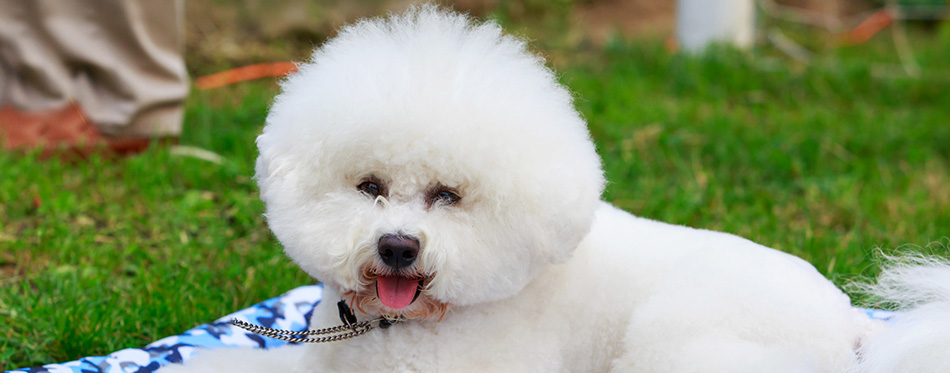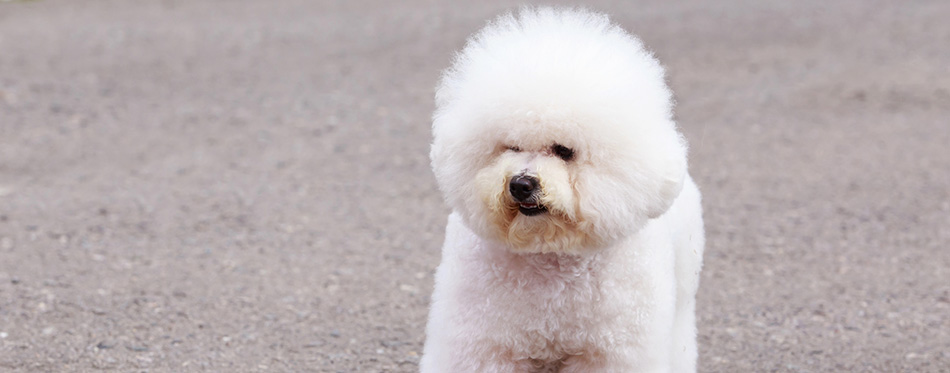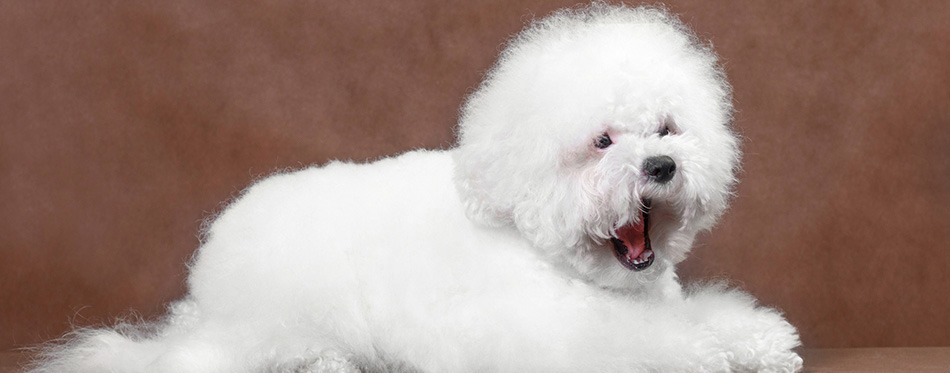Before getting a dog, you must be equipped with the right information about the breed to determine if you can care for it. They are no denying the benefits that come with having a pet dog and the least you can do is know them well enough to cater to their needs. If you are considering getting a Bichon Frise, then here is some helpful information on the breed.
In terms of appearance, they are small in stature but it is not uncommon to have slightly larger ones. They have a slightly rounded head, with a not so pointed muzzle and white hair. Their eyes are dark and round and they have a black nose. It is an adorable dog to look at but has other characteristics you might be interested in. In this article, everything else you need to know about the Bichon dog will be discussed so you have an idea of what to expect with them.

History of the Bichon Frise
Most of the time, the Bichon dog is portrayed as a French dog even though it is originally a Spanish sailing dog. This is because the French developed it into a variety of gentle lap dogs. They originated from water dogs, and are descendants of either the water spaniel or Barbet breeds, and the poodle breeds. There are four categories of Bichons today, which are the Maltese, Havanese, Bolognese and the Bichon Frise or Tenerife. Travelers preferred this breed as companion animals because of their merry nature and so they moved around a lot. At some point, Italian sailors exchanged them for other goods or services in the barter system as they moved from one continent to the next. In the 14th century, the sailors discovered the breed again and were known to have returned them to Europe. In continental Europe, they became the favorites of Italian nobility and their coats were trimmed lion-style as was the style of the court dogs.
The breed was popular in France under the reign of Francis but even more during the reign of Henry III. In Spain, they were popular as pets of the sons and daughters of kings as well as renowned painters. It was in the nineteenth century that the breed became ‘common’ and served as guides for the blind and was used in performing circus tricks. On 5th March 1933, the kennel club of France, Société Centrale Canine, adopted the breeds’ official standard. At the time, the breed was known as both Tenerife and Bichon, and so the Fédération Cynologique Internationale proposed a name based on its characteristics. The Bichon Frise, where Frise means curly, was then admitted into the Société Centrale Canine studbook on 8th October 1934.
The US saw the breed in 1955 with the first litter whelped in 1956. The further development of the breed is due to two different breeders from different parts of the country acquiring them in 1959 and 1960. On 1st September 1971, the breed became eligible to be part of the American Kennel Club and was registered in their studbook in October 1972. In 2013, according to the AKC, this breed was the 40th most popular in the United States. Australia saw the breed in the 1970s and it was successful as both a companion and a show dog.
Quick Facts About The Bichon Frise
- Their name has a French pronunciation:
As mentioned, this dog originates from the Barbet and the name Bichon, meaning lap dog in French, is short for Frise is in reference to the dog’s locks and is French for curly. The name is hence pronounced bee-shon free-zay. It transitioned from Tenerife, where it was initially bred.
- Their lifestyle created a word:
In the olden days, this breed of dog was heavily pampered by their owners. Their treatment included a lot of extravagant processes, and since they were in a French environment, they inspired the creation of a French word. The French verb bichonner means ‘to pamper,’ and it is directly linked to how the breed’s needs were catered to.
- They are hypoallergenic:
One question to answer concerning this breed is ‘does bichon Frise shed?’ The fact is that there is nothing like a completely allergenic dog because most dogs shed. However, the level of shedding is what determines if a dog is considered hypoallergenic or not. With the Bichon Frise breed, there will be no need for allergy pills. They are one of the breeds that have minimal shedding and do not trigger allergic reactions in their sensitive owners. They, therefore, produce very little dander which is not likely to cause any severe damage when in their company.
- They were once royal dogs:
From the history of this breed, it is clear how liked they were amongst the elite. However, they soon become ‘street’ dogs as almost anyone had one. They became popular in circuses because they were very intelligent and could learn tricks very fast. They quickly became show dogs because of their ability to charm audiences.
- They are well traveled:
The ancient Bichon Frises are one of the early dogs to have been around the world. They were the favorite travel companion for sailors and were even traded for other goods and services. Hence, they saw various parts of the world and mostly flourished wherever they went.

Things You Should Know
Health
In the UK, US, and Canada, these dogs can live for about 12 to 14 years, or sometimes older. They have slightly more extended longevity as compared to purebreds and similar to dogs their size. In a survey conducted by the UK Kennel Club in 2004, it was gathered that the Bichon Frise’s leading causes of death were old age and cancer. These results are similar to the US/Canada breeders survey in 2007, which also had hematologic and unknown causes of death. During their lifetime, this breed is prone to chewing and scratching themselves, especially in the summer due to the moisture and warmth of the air. This gives way for severe skin conditions due to exposed sores. Even though they are considered hypoallergenic, they suffer from allergies which may be caused by pollen, fleas, dust, chemicals, and ticks. These dogs may also experience liver shunts during their lifetime, which leads to liver complications and failure. Underweight Bichon Frises and those allergic to protein-rich foods are more likely to suffer from this illness. It is difficult to detect the disease and it might be later in their life when it is fatal before it is discovered. Symptoms include seizures, loss of appetite, dark urine, and increased thirst, and the defect can be fixed through surgery. Other diseases the breed is prone to are diabetes, loose knee joints, heart disease, ear infections, and cataracts.
Training
When it comes to training a Bichon Frise, it is quite an enjoyable experience because of how intelligent the breed is. They are fast learners and can be independent and so need obedience training. It is easier to train the Bichon Frise puppy to imprint good manners and behaviors early. This is a more reliable way to ensure they grow up to be well-behaved dogs amid others. While training, be firm, yet gentle and avoid being too harsh and scolding them. You can take them to dog classes to expose them to other dogs, which helps with socialization. Socialization also ensures that they are well-rounded dogs and can manage their behaviors in the midst of others. If your budget cannot support classes, you can socialize them by inviting a friend over often or going to places where they can be exposed to others.
Exercise
Exercise helps with keeping the breed in shape so that they can live a healthy life, and you can both enjoy the time you spend together. Exercise also benefits their respiratory and circulatory system and maintains flexible joints and toned muscles. It also helps with digestion, sleep, and weight management. They are not lazy but are neither high-energy dogs and require a moderate amount of exercise to remain healthy. They can be exercised with daily walks, toys and mental stimulation. Twenty to Thirty minutes of comfortable, leisure walk a day is enough to keep this dog in shape. You can alternate between long or short walks but immediately stop when you notice excessive panting. Because they are playful, getting them toys makes their playtime more pleasurable. They are moderate chewers and so will not cause too much damage to their toys.
Related Post: Dog Toys
Nutrition
Feeding your pet is an essential part of taking care of them and it depends on some factors including age and dietary requirements. To know what to feed this breed, you would have to answer the question, ‘how big do bichon frise get?’ Bichon Frises can grow as big as 10 to 20 pounds with a height of 9 to 12 inches. From this, it is obvious that they are small dogs and so they need high-quality rather than high-quantity food. Their meals should consist of calories, vitamins, minerals, and protein for healthy growth. The National Research Council of the National Academies suggests that the active dog requires 404 to 663 calories a day to be healthy. Inactive, sick or aged dogs, on the other hand, require 296 to 495 to live a healthy life. It is advised to feed the adult dog twice a day while the puppy can be fed three times. Their meals should consist of 18 to 22 percent protein, sourced from fish, poultry or beef. It will also help to have carbohydrates, fats, vegetables, and grains in their diet.
For more guides on choosing the right dog food, you may wish to check out our reviews of the best dry dog food, organic dog food, grain free dog food, dog food for small dogs and puppy food.
Grooming
Bichon Frises have a white, silky coat throughout their body, and like all white things, they need regular maintenance. They also have a curly coating which prevents any dander or loose hair from getting into the environment. Brushing them helps to eliminate any loose hair which may cause matting or tangling. They should be groomed every four to eight weeks for them to look great at all times. You can bathe them a well to ensure their coat remains white. This breed has hair also growing in their ear canals, which makes them more likely to have dirt, moisture, bacteria, and heat trapped inside. This creates an imbalance in the ear, making it rife for ear illnesses including ear hematoma which occurs when there’s excessive shaking of the ear. Trim their nails regularly so that they can walk, run and play comfortably and you will be safe from scratches. Dental health is also essential in removing any bacteria or plaques that can cause serious illnesses. Always use dog-friendly tools and products, so that you do not hurt the dog. If at any point, you require help with choosing products for them, you can consult a veterinarian doctor.
Check out our dog grooming guides, such as dog shedding brush, dog grooming gloves, dog bathtub, dog dryer, dog nail clippers, dog ear cleaner and dog wipes.
Temperament
This breed of dog stands out as a merry or cheerful, as well as a curious one. They love to be mischievous and their cute appearance allows them to get away with it. They enjoy being loved and taking center stage to receive attention. They are charming and will win the hearts of anyone they meet. Even though they like to play, sometimes they exhibit an independent streak but still do not like being left alone. They may experience separation anxiety, which will translate into destructive behaviors such as chewing and tearing up objects. They are brilliant and live well with children and so are the perfect family pets.

To Summarize
It is always nice to have a companion to spend time with, that will also fit your lifestyle. If you are a home person who wants a small dog to keep then the Bichon Frise is for you. It is also a family dog since it loves being around people as the center of attention. You will not need to worry about allergies since this dog does not shed much, however, they still need to be always groomed to look sharp. They are cheerful animals and it will be a pleasure to have them around guests. It is always better to have a veterinarian close by who can help with things you cannot do on your own.
Sources:
- Bichon Frisé – PetMD
- History of the Bichon Frise – Bichon Frise Club of America

